Gibbs, an 11 year old Samoyed, used to be a Grand Champion show dog.
5 years ago, he was adopted by his furever family.
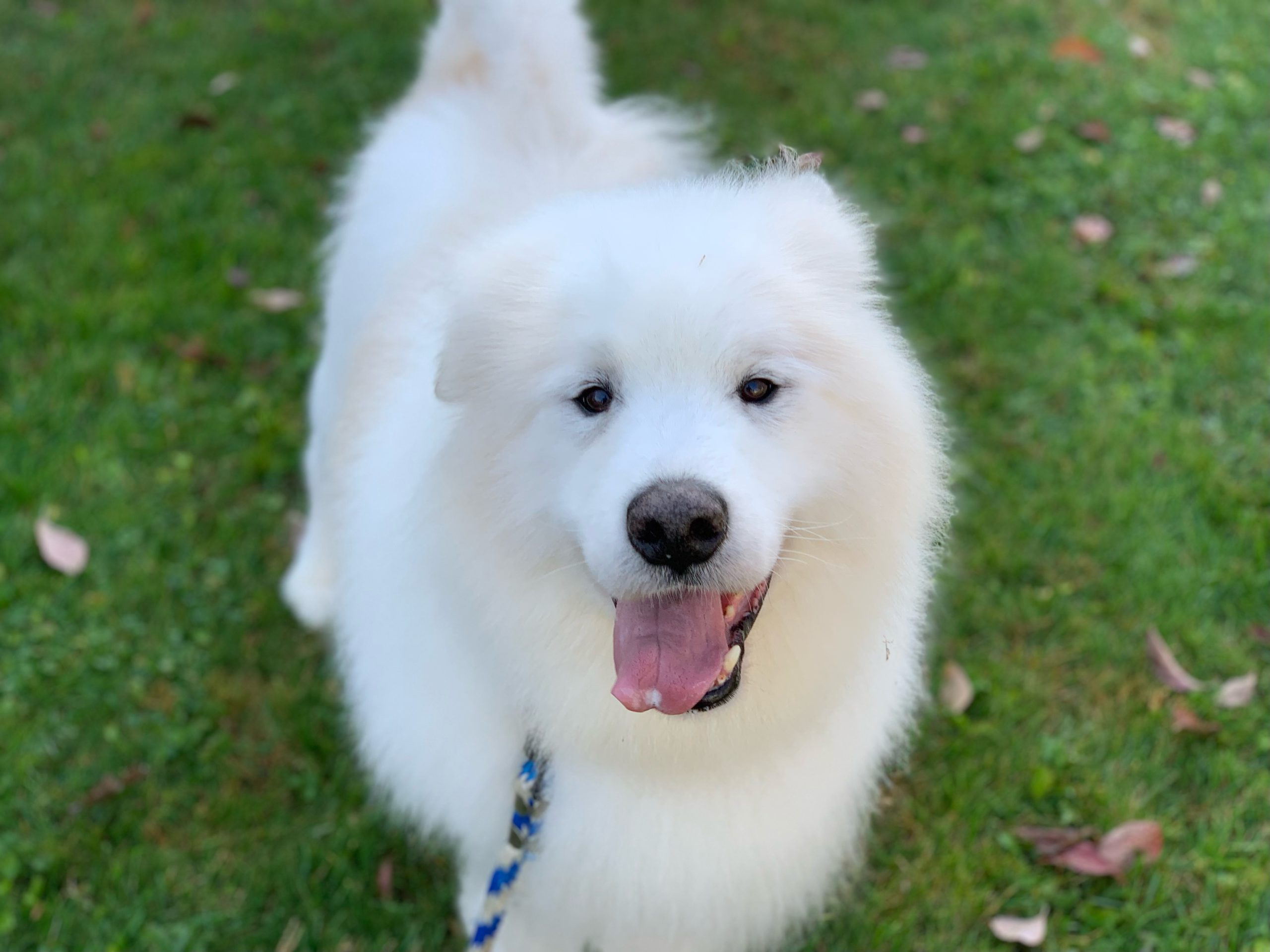
His owner recalls: “About a year ago, Gibbs started to have some irritation, swelling & bleeding in his back end. A number of treatments were tried (clipping his hair, special food, ointments, antibiotics, immunosuppressive medications).”
He started to develop masses all around his anus – 360 degrees – and beyond.
The masses slowly grew to extravagant proportions. Still, my impression and my hope were that they were “peri-anal adenomas.” These benign tumors are commonly seen in intact male dogs. They rarely happen in females and castrated males.
BEFORE YOU GO ANY FURTHER, PLEASE BE AWARE THAT THE PICTURES BELOW ARE VERY GRAPHIC.
They are not for the faint of heart. If you have a sensitive stomach, don’t look !!!
This is how Gibbs’ behind looked when he first arrived at HRVSS.
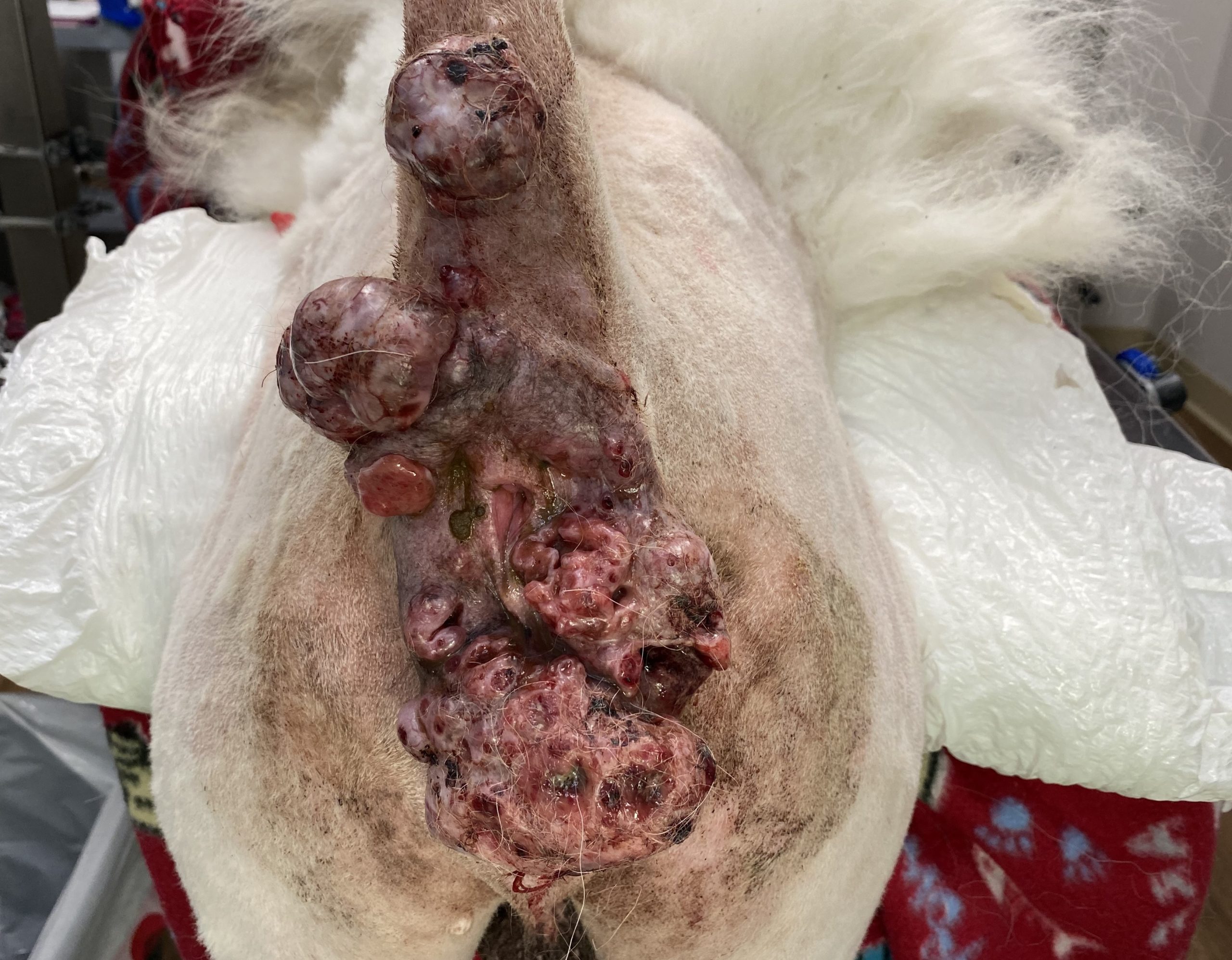
Meanwhile, Gibbs did not show any change in his puppylike exuberance or eating habits.
I recommended surgery as the best option, since all other treatments had failed.
Understandably, Gibb’s owner worried “whether surgery was possible for him, given his age and current condition,” but he was “hopeful and excited for a possible solution.”
It was decided to remove the smallest mass under the tail first (see #1 in the picture below), then the medium-sized mass (see #2 in the picture below).
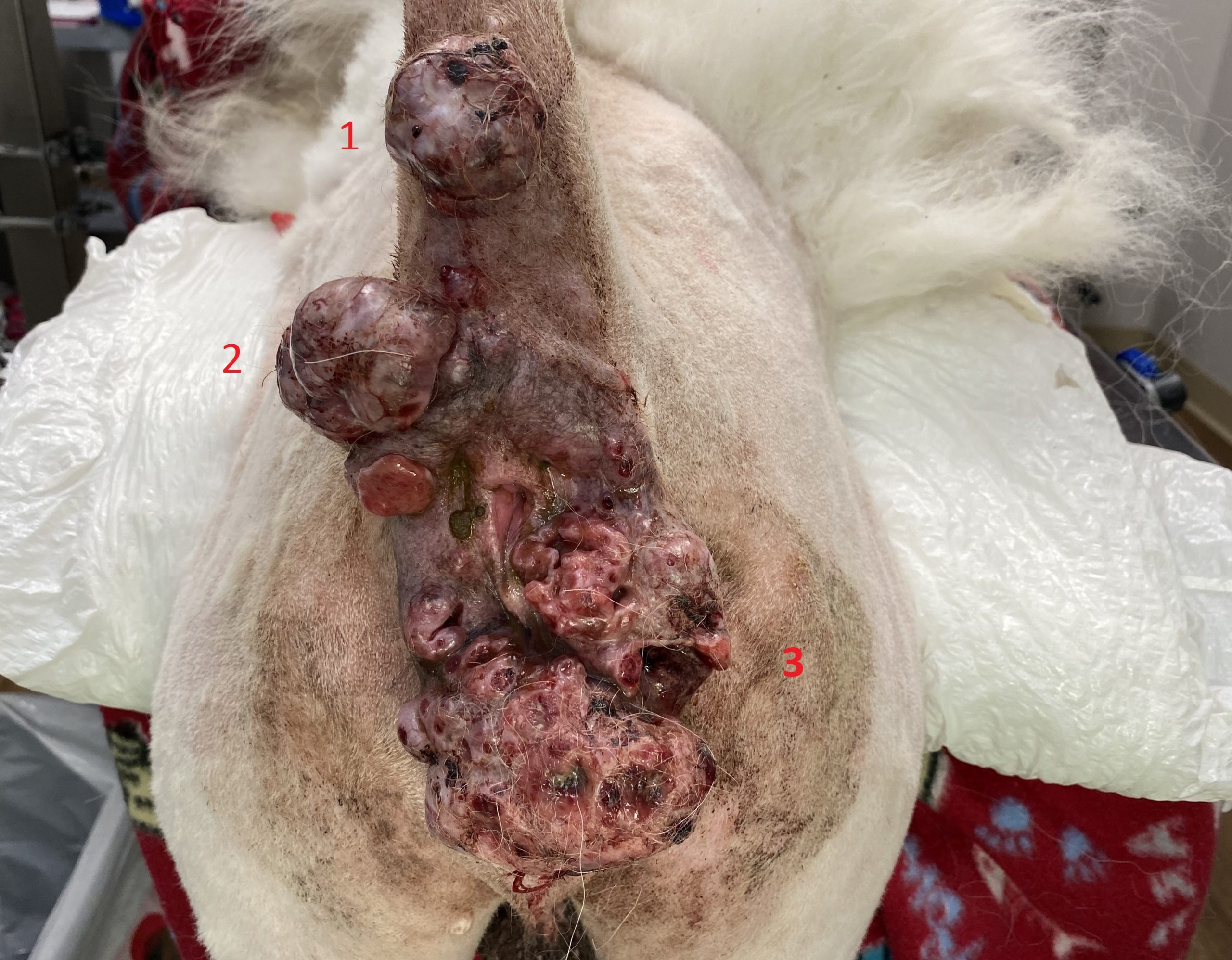
During removal of mass #1, Gibbs lost a significant amount of blood.
And that was the smallest mass so far!
During removal of mass #2, Gibbs lost so much blood, that I wondered whether it was a good idea to continue surgery and remove the 3rd and largest mass.
This was not an easy decision, and certainly not a common one.
It was a difficult combination of an ethical and a medical dilemma.
I was concerned that by getting cocky & stubborn, we might lose this older patient from massive bleeding.
I reluctantly decided to stop right there and not even try to remove the largest mass.
We did however move on to the second part of the surgery, which was to neuter him.
That part was uneventful.
Thankfully, Gibbs’ owner completely understood the reasoning.
He remembers: “I had mixed feelings after surgery needed to be aborted. Sure, there was considerable improvement. After the castration, my hope was that the male hormones that had been “feeding” the mass would decrease.”
We decided to allow Gibbs to recover and make some red blood cells.
His owner wrote: “Gibbs is recovering well and is basically back to his pre-surgery personality.”
One week later, the biopsy report fortunately revealed that the masses were benign. They were indeed peri-anal adenomas.
Again, this is a common tumor that mostly happens in intact (non-neutered) male dogs. What was not common in Gibbs’ case is how extravagantly they grew.
Three weeks later, Gibb’s blood work looked good, and the second surgery was performed.
This is how his behind looked right before the second surgery.
You can see the scars where masses #1 and 2 used to be.
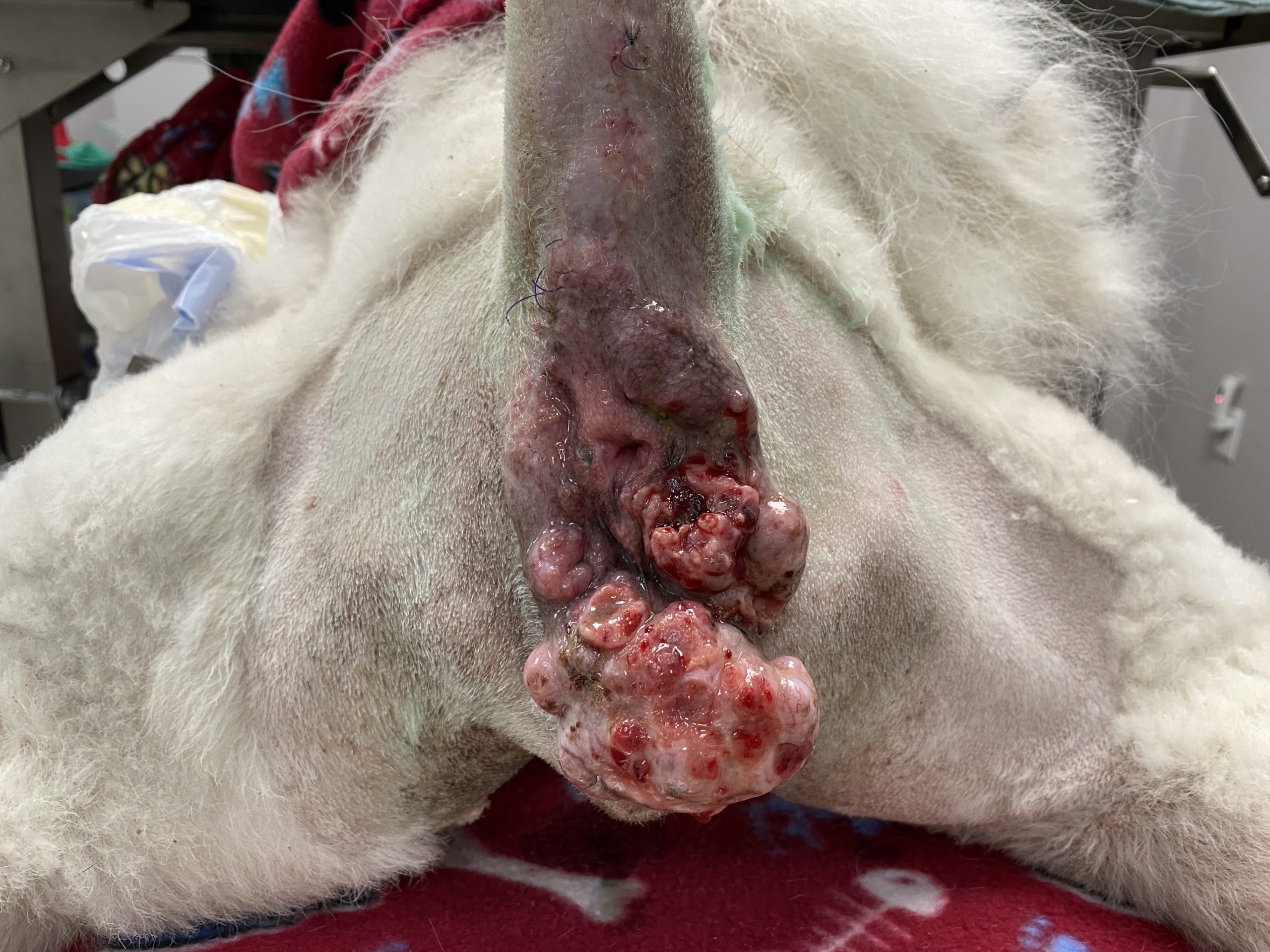
Now… calling mass #3 a single mass is very inaccurate. It was not one mass, but a multitude.
Some were very visible, and some could only be felt under the skin.
The idea was to remove all of them during one single surgery.
He certainly bled a lot again during removal of mass #3, but he made a smooth recovery.
This is how his behind looked after the second surgery.
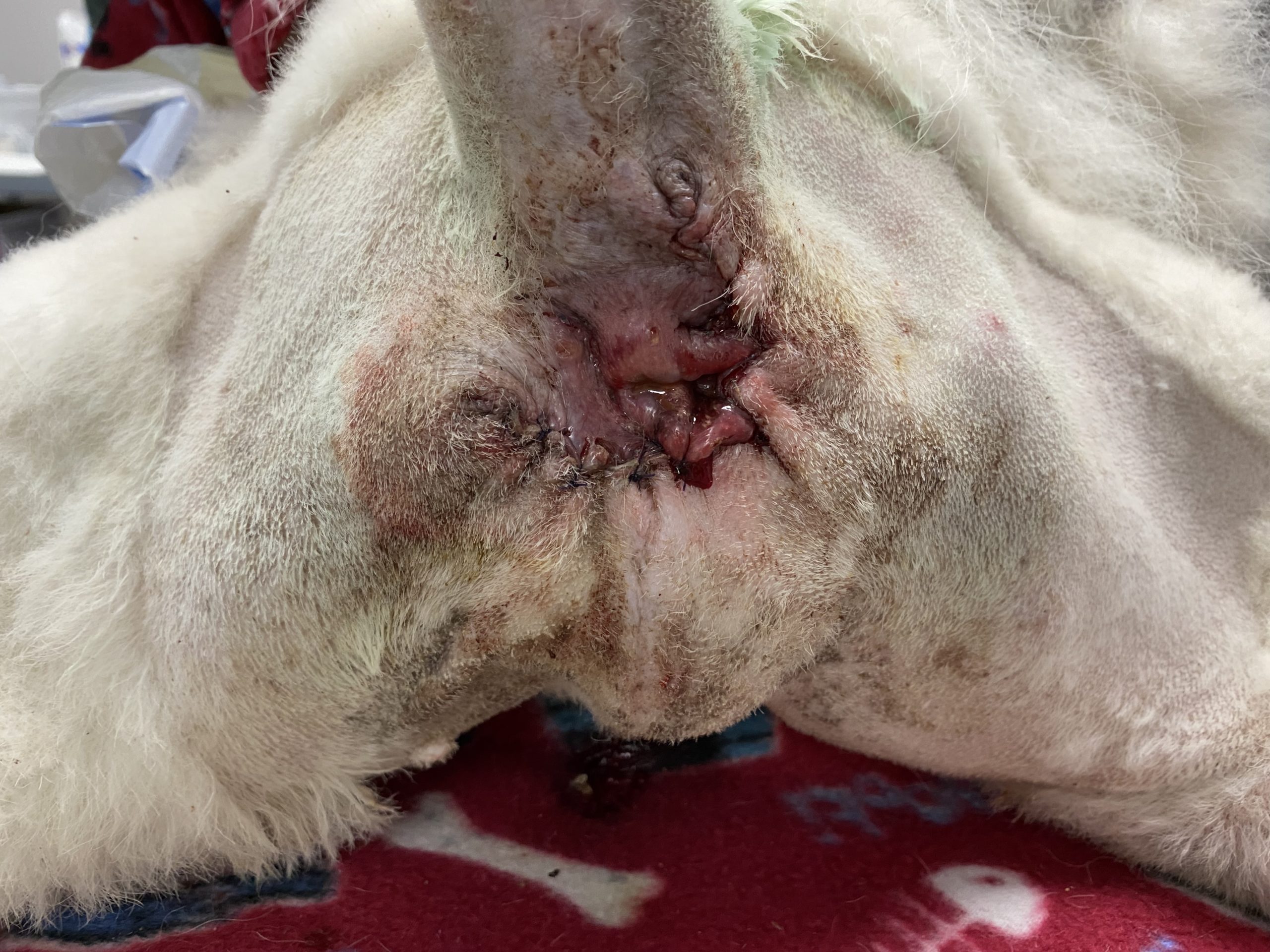
Then Gibbs went home to recover and heal.
His owner writes: “Gibbs looks like a new dog! He is back to his normal personality. The surgical site looks to be healing well. His demeanor is back to his typical happy state.”
After 3 weeks of healing, and after a good bath, this is what Gibb’s behind looked like.
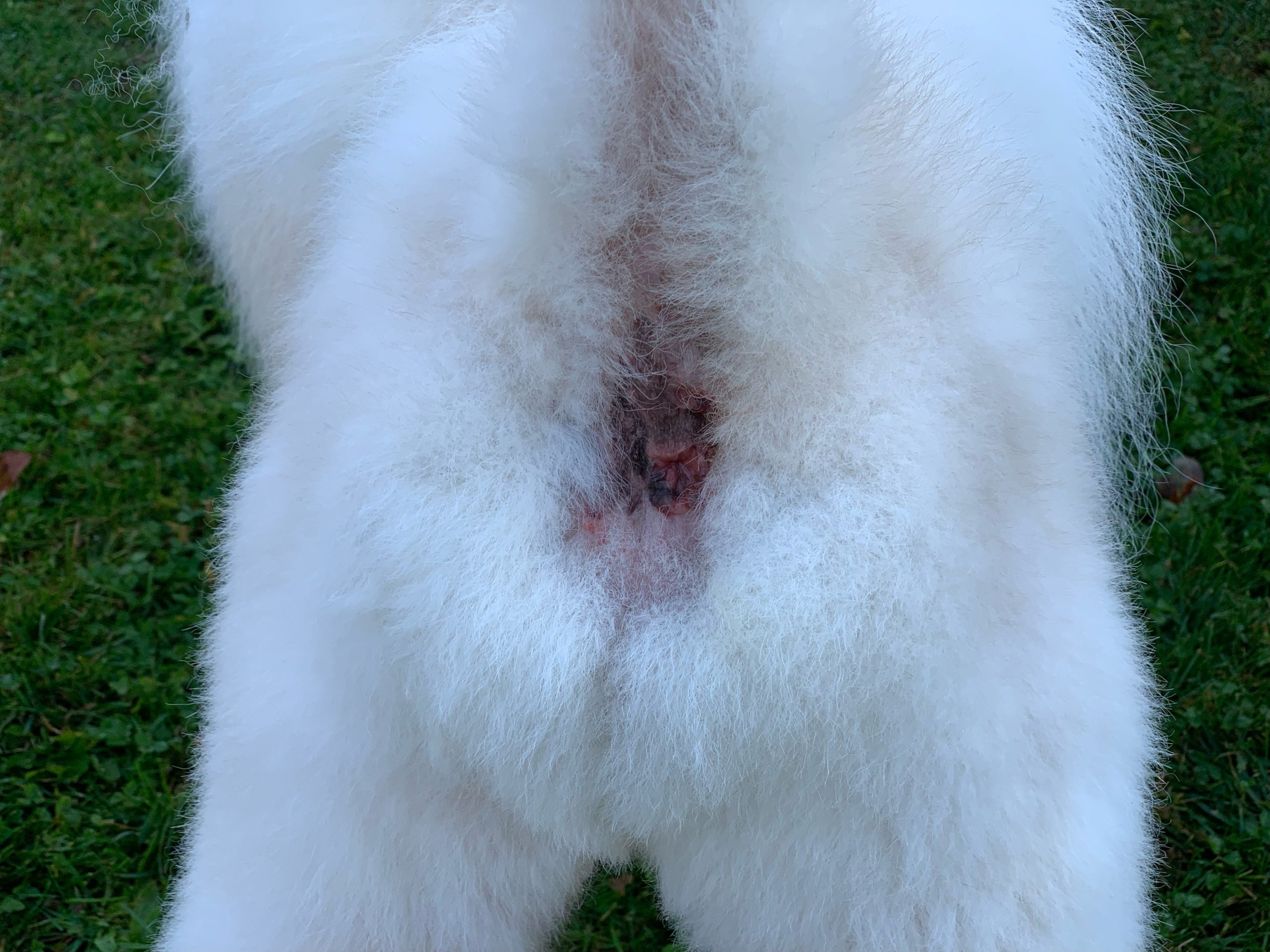
Gibb’s owner concludes:
“The daily struggle with this chronic intermittent bleeding mass had affected all aspects of our life over the past year. Gibbs is now cured. His personality is to always be happy and have a puppylike exuberance, but I’m sure he had been experiencing great discomfort with this ulcerated mass. I’m hopeful that the mass will not return with Gibbs being neutered and the masses removed.”
“I appreciate you making the executive decision to stop that first surgery, inevitably saving him from bleeding out, and for being willing to proceed with the second surgery. This allowed Gibbs time to recover in between the two surgeries, and set him up for success for the second surgery.”
In the end, it was a very difficult decision in the moment, but likely the right choice. Now Gibbs can enjoy life again, get baths, and look like a Grand Champion show dog.
If you would like to learn how we can help your pet with safe surgery and anesthesia, please contact us through www.HRVSS.com
Phil Zeltzman, DVM, DACVS, CVJ, Fear Free Certified

